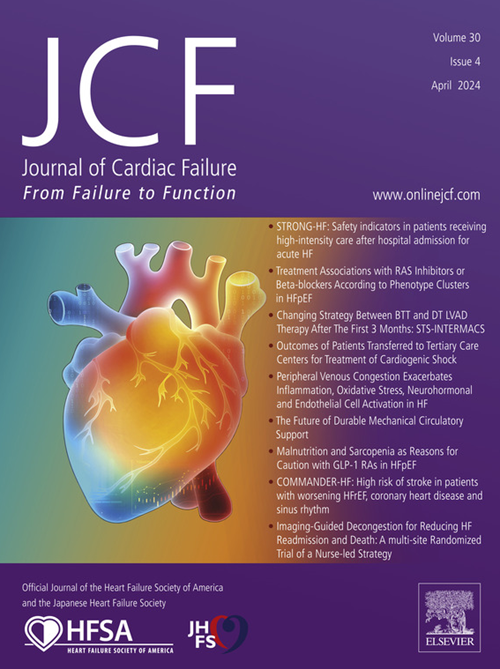将左心房应变纳入算法,改进左心室舒张功能障碍的评估:LA 应变和左心室舒张功能障碍评估。
IF 6.7
2区 医学
Q1 CARDIAC & CARDIOVASCULAR SYSTEMS
引用次数: 0
摘要
背景:最新的左心室舒张功能障碍(LVDD)超声心动图评估指南使相当一部分患者的 LVDD 状态未确定。我们旨在研究将左心房(LA)应变作为不确定 LVDD 类别的决定因素的替代算法的影响:我们纳入了 823 名在 7 天内接受超声心动图和心脏磁共振成像检查的患者。超声心动图评估 LVDD 时遵循了当代指南和一种替代算法,其中包括将 LA 储层应变作为平局判定标准。通过心脏磁共振成像检查 LVDD 与左心室心肌瘢痕负担的关系,并得出综合结果。275例(33%)患者患有LVDD,其中119例为晚期LVDD(II-III级),117例(14%)LVDD等级不确定。当 LA 应变的切点为 18%、24% 和 35% 时,受试者会相应地被重新分类为正常或依赖 LVDD。重新分类后的结果风险分级与现行指南相似:结论:LA 储库应变通过消除不确定状态/等级,改善了 LVDD 评估,同时保持了与现行指南相同的有效结果分层。本文章由计算机程序翻译,如有差异,请以英文原文为准。
Improving the Assessment of Left Ventricular Diastolic Dysfunction by Including Left Atrial Strain in the Algorithm
Background
The latest guidelines on echocardiographic assessment of left ventricular diastolic dysfunction (LVDD) leave a significant proportion of patients with LVDD status undetermined. We aimed to examine the implication of an alternative algorithm incorporating left atrial (LA) strain as a tiebreaker on the indeterminate LVDD category.
Methods and Results
We included 823 patients who underwent echocardiography and cardiac magnetic resonance within 7 days. LVDD was assessed by echocardiography following contemporary guidelines and an alternative algorithm including LA reservoir strain as a tie breaker. LVDD was examined for its association with LV myocardial scar burden by cardiac magnetic resonance, and a composite outcome. There were 275 patients (33%) who had LVDD, of whom 119 had advanced grades of LVDD (grades II–III), and 117 (14%) had an indeterminate LVDD grade. When LA strain was applied at cutpoints of 18%, 24%, and 35%, patients were reclassified as normal or LVDD-dependent accordingly. Reclassification allowed a similar outcome risk stratification as the current guidelines.
Conclusions
LA reservoir strain improved LVDD assessment by eliminating indeterminate status/grade while maintaining the same effective outcome stratification as the current guidelines.
求助全文
通过发布文献求助,成功后即可免费获取论文全文。
去求助
来源期刊

Journal of Cardiac Failure
医学-心血管系统
CiteScore
7.80
自引率
8.30%
发文量
653
审稿时长
21 days
期刊介绍:
Journal of Cardiac Failure publishes original, peer-reviewed communications of scientific excellence and review articles on clinical research, basic human studies, animal studies, and bench research with potential clinical applications to heart failure - pathogenesis, etiology, epidemiology, pathophysiological mechanisms, assessment, prevention, and treatment.
 求助内容:
求助内容: 应助结果提醒方式:
应助结果提醒方式:


